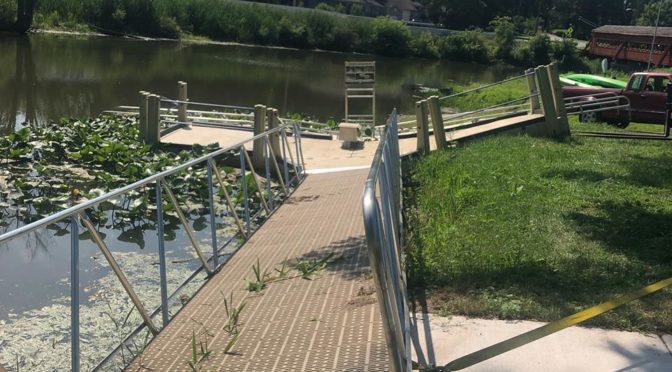
The Effects Weather Can Have On A Dock
Winter weather is known by many as a dock’s worst enemy. Harsh weather can have catastrophic effects on a dock such as rusted frames, rotten/destroyed decking, broken bolts, and more. Deaton’s Waterfront Services is luckily here to inform all about the negative effects weather will have on a dock, and ways to prevent them.
Factors of Weather That Affect Docks
There are several factors to take into consideration when a new dock is in the design phase. While it is easy to move quickly in the short term of getting a new dock, it could end up becoming very costly long term. Thankfully the experts at Deaton’s have 30 years of experience, and are trained to account for factors such as:
- Wind Load
- Snow Load
- Earth Shifting
- Sink Holes
- Ice
- Temperature
- Water Fluctuation
These factors should not only be considered for just the dock, but also for any accessories that may go along with it. This includes lifts, PWC ports, launches, slides, ladders, and more. The team at Deaton’s Waterfront Services is equipped to ensure a worry-free installation. This includes anything related to the waterfront: docks, walls, and lifts. Now let’s take a look at how the weather will impact the different types of docks.
Weather Effects on a Floating Dock
Floating docks are better equipped to handle rougher weather, but not by much. The key difference between the two docks’ reaction to weather is that a floating dock will fluctuate with water. A floating dock is just as susceptible to rotten decking and rusted frames as a stationary dock is. The ways to combat harsh weather in a floating dock is all in the quality of the build. A hot-dipped galvanized steel dock with a weather-resistant decking and thick-shelled floats will handle rough weather a lot better than a wooden dock with cheap floats.
Any floating dock will have a maximum weight capacity. The maximum weight that can be carried or supported will be rated by the buoyancy that is underneath the frame and decking. Typically we like to see at least a buoyancy of #25-95 pounds of live load per square foot. Live load is the optimal buoyancy you can maintain across the square footage of your floating platform that’s on the water. The floats are the largest factor you need to consider, most flotation over time will develop lack of optimal buoyancy. This contributes to the dock losing freeboard. “Freeboard “is the measurement from the water line to the top of the dock. Measured freeboard of a floating boat dock depends on the usage, or watercraft that will be using it. Typical freeboard is from 5”- 40”, Deaton’s Waterfront Services can help you measure the recommended proper freeboard.
Weather Effects on a Stationary Dock
Stationary dock structures are anchored by having poles, pilings, or supports being driven or anchored into the bottom of the lake bottom. This is a nice and stable way for installation that creates a solid platform. The biggest worry to this dock is ice / landshift. If the anchors or pilings settle or get shifted with ice or land movement this will cause the dock to be unlevel, and dangerous to use. There are ways to combat this by using bubblers, water attenuators, or have shoreline stabilization installed. A lot of this can be overcome by doing some core samplings of the soil, and making sure to take the necessary measures.
If the weather affects your dock in any way, or you are interested in designing a new dock feel free to request a quote from us. Our team at Deaton’s Waterfront Services will be happy to help. Give us a call at (317) 747-4933 or stop by our office located at 215 S. Madison St, Fortville, IN 46040.
